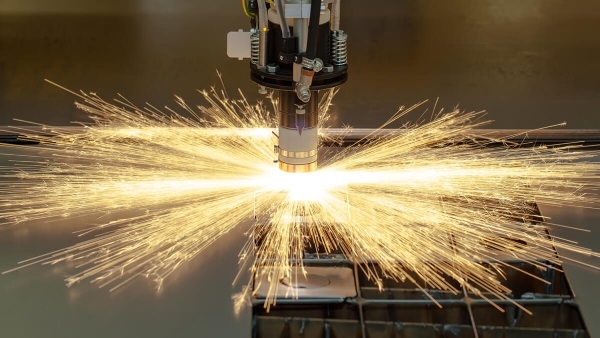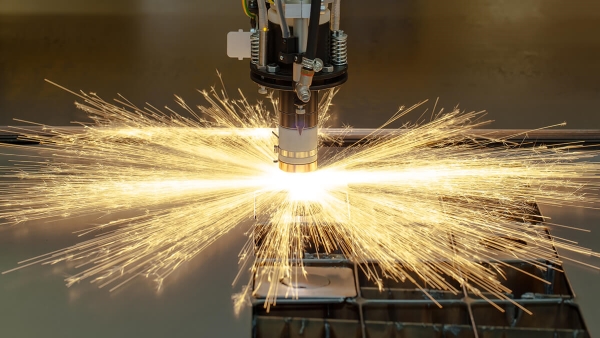Molybdenum Wire Cutting vs. Brass Wire in EDM

When it comes to wire-cut Electrical Discharge Machining (EDM), the type of wire you use makes a world of difference. As someone who's spent decades tinkering with machines and watching metal behave under sparks, I can tell you—it’s not just a wire, it’s your cutting partner. And two of the most commonly used partners in this dance are molybdenum wire and brass wire.
Electrical Discharge Machining is a non-traditional machining process. It doesn’t use physical contact like a drill or a mill. Instead, it uses tiny electrical sparks to erode metal away. It’s particularly useful for hard metals or delicate workpieces. You need a wire to carry the spark, and that’s where molybdenum and brass come in.

1. Material Properties
The wire in EDM does more than just conduct electricity. It needs to handle heat, tension, and wear—all while delivering consistent performance.
Brass wire is an alloy of copper and zinc. It's relatively soft and conducts electricity well. So, it is great for cutting most steels, aluminum, and other conductive metals.
Molybdenum wire is a pure metal. It’s much harder than brass and has a higher melting point. It’s also more resistant to wear, so it lasts longer before it needs to be replaced.
Table 1: Properties of Mo Wire and Brass Wire
|
Property |
Molybdenum Wire |
Brass Wire |
|
Composition |
Pure Molybdenum (≥99.95%) |
Copper + Zinc alloy |
|
Melting Point |
~2,620°C |
~930°C |
|
Tensile Strength |
Very High (~1100 MPa+) |
Moderate (~500–800 MPa) |
|
Electrical Conductivity |
Moderate (~30% IACS) |
High (~25–35% IACS) |
|
Hardness |
High |
Medium |
Further reading: Types and Uses of Molybdenum Wire
2. Cutting Speed and Precision
Now, when it comes to actual cutting, the choice of wire affects both speed and finish.
Brass wire tends to cut faster. That is handy if you're in a hurry. But molybdenum wire gives you a more stable, precise cut, especially on intricate or deep parts.
Table 2: Performance of Mo Wire and Brass Wire
|
Metric |
Molybdenum Wire |
Brass Wire |
|
Cutting Speed |
Slower |
Faster |
|
Surface Finish |
Better |
Good |
|
Dimensional Accuracy |
Very High |
High |
|
Stability in Long Cuts |
Excellent |
Fair |
3. Wire Reusability
Here’s a big one—reusability. Molybdenum wire can be reused multiple times. In some machines, it goes through a recycling system that brings it back for another round.
Brass wire? It's single-use. Once it’s done, it’s done.
So, if you're looking to cut costs over the long haul, Mo wire might be your best bet.
4. Cost
The wire material itself is more expensive for molybdenum than brass. But since moly wire is reusable, it often turns out cheaper in the long run. With brass wire, even though it’s cheaper per spool, you burn through it quickly.
If you're running 24/7 and need speed, brass may cost less overall. If you're doing smaller runs or short jobs, molybdenum wins on price.
It’s a bit like razors—cheap disposable ones versus a sturdy, reusable safety razor.
5. Machine Type
Not all EDM machines play well with all wires.
- Brass wire is standard in most wire EDM machines.
- Mo wire is more common in Asian-style machines. These machines are often designed with moly wire reuse systems in mind.
If you're shopping for a machine or setting up a shop, it's good to know what your machine was built to handle.
6. Applications
Each wire has its own strengths and sweet spots.
If you're making small batches of simple parts, brass might be your best friend. But if you’re in it for the long haul, or working with fine tolerances, moly is worth the effort.
Table 3: How to Choose between Mo Wire and Brass Wire
|
Application |
Best Wire Choice |
|
High-precision, fine-feature cutting |
Molybdenum Wire |
|
General-purpose EDM work |
Brass Wire |
|
Cost-sensitive production |
Brass Wire (lower upfront cost) |
|
Long continuous cuts |
Molybdenum Wire |
|
Hard-to-machine or exotic metals |
Molybdenum Wire |
|
Machines not compatible with moly |
Brass Wire |
For more information, please check Advanced Refractory Metals (ARM).
Final Thoughts
Choosing between molybdenum and brass wire cutting comes down to your budget, speed, and accuracy needs. Brass gives you speed and simplicity. Molybdenum gives you strength and savings over time.
{{item.content}}
LEVE A REPLY
{{item.children[0].content}}
{{item.content}}






